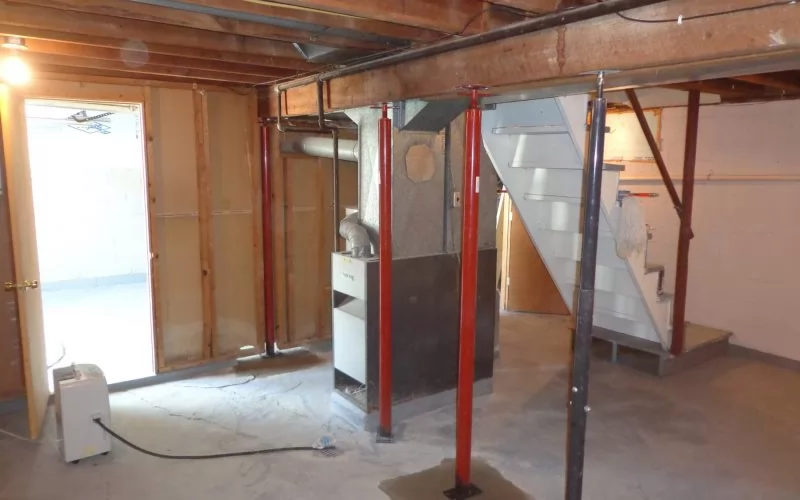by Nick Gromicko, CMI®, and Kenton Shepard
Adjustable steel columns, also known as screw jacks and beam jacks, are hollow steel posts designed to provide structural support. An attached threaded adjustment mechanism is used to adjust the height of the post.
A few facts about adjustable steel columns:
- They are usually found in basements.
- In some parts of North America, adjustable steel columns are called lally columns, although this term sometimes applies to columns that are concrete-filled and non-adjustable.
- They can be manufactured as multi-part assembles, sometimes called telescopic steel columns, or as single-piece columns.
The following are potentially defective conditions:
- The post is less than 3 inches in diameter. According to the 2012 International Residential Code (IRC), Section R407.3, columns (including adjustable steel columns)…
“shall not be less than 3-inch diameter standard pipe.”
Poles smaller than 3 inches violate the IRC, although they are not necessarily defective. A 2½-inch post may be adequate to support the load above it, while a 4-inch post can buckle if the load exceeds the structural capacity of the post. Structural engineers — not inspectors — decide whether adjustable steel posts are of adequate size.
- The post is not protected by rust-inhibitive paint. The IRC Section R407.2 states:
“All surfaces (inside and outside) of steel columns shall be given a shop coat of rust-inhibitive paint, except for corrosion-resistant steel and steel treated with coatings to provide corrosion resistance.”
Inspectors will not be able to identify paint as rust-inhibitive. In dry climates where rust is not as much of a problem, rust-inhibitive paint may not be necessary. Visible signs of rust constitute a potential defect.
- The post is not straight. According to some sources, the maximum lateral displacement between the top and bottom of the post should not exceed 1 inch. However, tolerable lateral displacement is affected by many factors, such as the height and diameter of the post. The post should also not bend at its mid-point. Bending is an indication that the column cannot bear the weight of the house.
- The column is not mechanically connected to the floor. An inspector may not be able to confirm whether a connection between the post and the floor exists if this connection has been covered by concrete.
- The column is not connected to the beam. The post should be mechanically connected to the beam above to provide additional resistance against lateral displacement.
- More than 3 inches of the screw thread are exposed.
- There are cracks in upstairs walls. This condition may indicate a failure of the columns.
In summary, InterNACHI inspectors may want to inspect adjustable steel columns for problems, although a structural engineer may be required to confirm serious issues.




